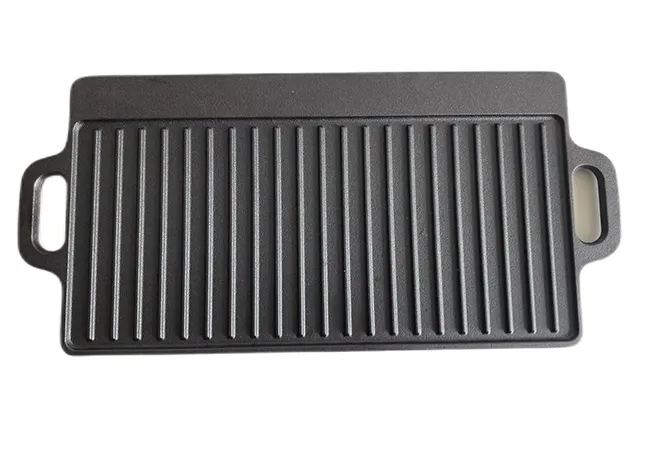
Versatile Cast Iron Cooking Pots for Delicious Home-Cooked Meals and Durability
The Charm and Utility of Cast Iron Oven Pots
Cast iron oven pots have long been a staple in kitchens around the world, cherished for their durability, versatility, and ability to retain heat. Whether you’re an amateur cook or a seasoned chef, investing in a cast iron oven pot can elevate your culinary experience. The purpose of this article is to explore the myriad advantages of using these cooking vessels, as well as some tips on how to care for them properly.
The Benefits of Cast Iron Oven Pots
One of the most significant benefits of cast iron oven pots is their excellent heat retention. Unlike many modern cookware materials, cast iron evenly distributes heat throughout its surface, allowing for consistent cooking. This characteristic is particularly advantageous for slow-cooking dishes such as stews or braises, where even heat is essential for the melding of flavors. Furthermore, cast iron cookware can be used on various heat sources, including stovetops, ovens, and even open flames, making them versatile in different cooking environments.
Another advantage of cast iron is its ability to develop a natural non-stick surface over time. With proper seasoning—a process where cooking oil is baked onto the surface—cast iron pots can become almost as non-stick as some modern synthetic alternatives. This feature not only makes for easier cooking and serving but also simplifies the cleanup process, a benefit that every busy cook appreciates.
Additionally, cast iron oven pots are incredibly durable. When properly maintained, they can last for generations, often being passed down through families as cherished heirlooms. This durability also makes cast iron a sustainable choice, reducing the need to frequently replace cookware and minimizing waste.
Culinary Versatility
cast iron oven pot

Cast iron oven pots are incredibly versatile, making them suitable for a wide range of cooking techniques. From baking bread to roasting vegetables and frying meats, these pots can handle it all. For instance, many bakers swear by using cast iron for making artisan bread, as it can create a beautifully crisp crust. The heat retention capability allows for an even rise and ensures that the bread cooks thoroughly without burning.
Moreover, they are perfect for one-pot meals, where you can sauté your ingredients on the stovetop and then transfer the pot directly into the oven for finishing. This method saves time and reduces the number of dishes you need to wash after a meal.
Caring for Your Cast Iron Oven Pot
To ensure your cast iron pot lasts for years, proper care is essential. After each use, it’s typically recommended to clean it with hot water and a stiff brush, avoiding soap if possible, as it can strip away the seasoning. Drying the pot immediately is crucial to prevent rusting. A light coating of oil after cleaning will help to maintain the seasoning.
If your cast iron pot becomes rusty or the seasoning has worn off, don’t despair. It can often be restored with some elbow grease and patience. Re-seasoning involves scrubbing the pot to remove rust, applying a thin layer of oil, and then baking it in the oven to create a new non-stick surface.
Conclusion
Cast iron oven pots are more than just cooking vessels; they are a blend of tradition, functionality, and culinary artistry. The combination of heat retention, durability, and versatility makes them an invaluable addition to any kitchen. With a little care and proper maintenance, they can serve as a reliable companion for future meals, creating delicious dishes that bring people together around the table. Whether you’re simmering a hearty stew, baking a loaf of rustic bread, or preparing a Sunday roast, a cast iron oven pot is sure to enhance the experience, fostering a deeper appreciation for the art of cooking.
-
High Quality Cast Iron Pancake Crepe Pan - ZD Cookware | Durable, Non-Stick, Wooden HandleNewsJul.13,2025
-
High Quality Cast Iron Cookware - ZD Cookware|Durable Heat Retention&Non-Stick SurfaceNewsJul.13,2025
-
Cast Iron Pancake Crepe Pan-Durable Kitchenware-ZD CookwareNewsJul.13,2025
-
Premium Cast Iron Cookware ZD Cookware|Durable Non-Stick Wooden HandleNewsJul.13,2025
-
Durable Cast Iron Pancake Crepe Pan - Zhejiang ZD Cookware Co., Ltd.|Heat Retention,Durability,Non-Stick Surface,Versatile Cooking,Wooden HandleNewsJul.12,2025
-
High Quality Cast Iron Cookware - ZD Cookware | Black Pancake Pan, Non-Stick SurfaceNewsJul.12,2025


